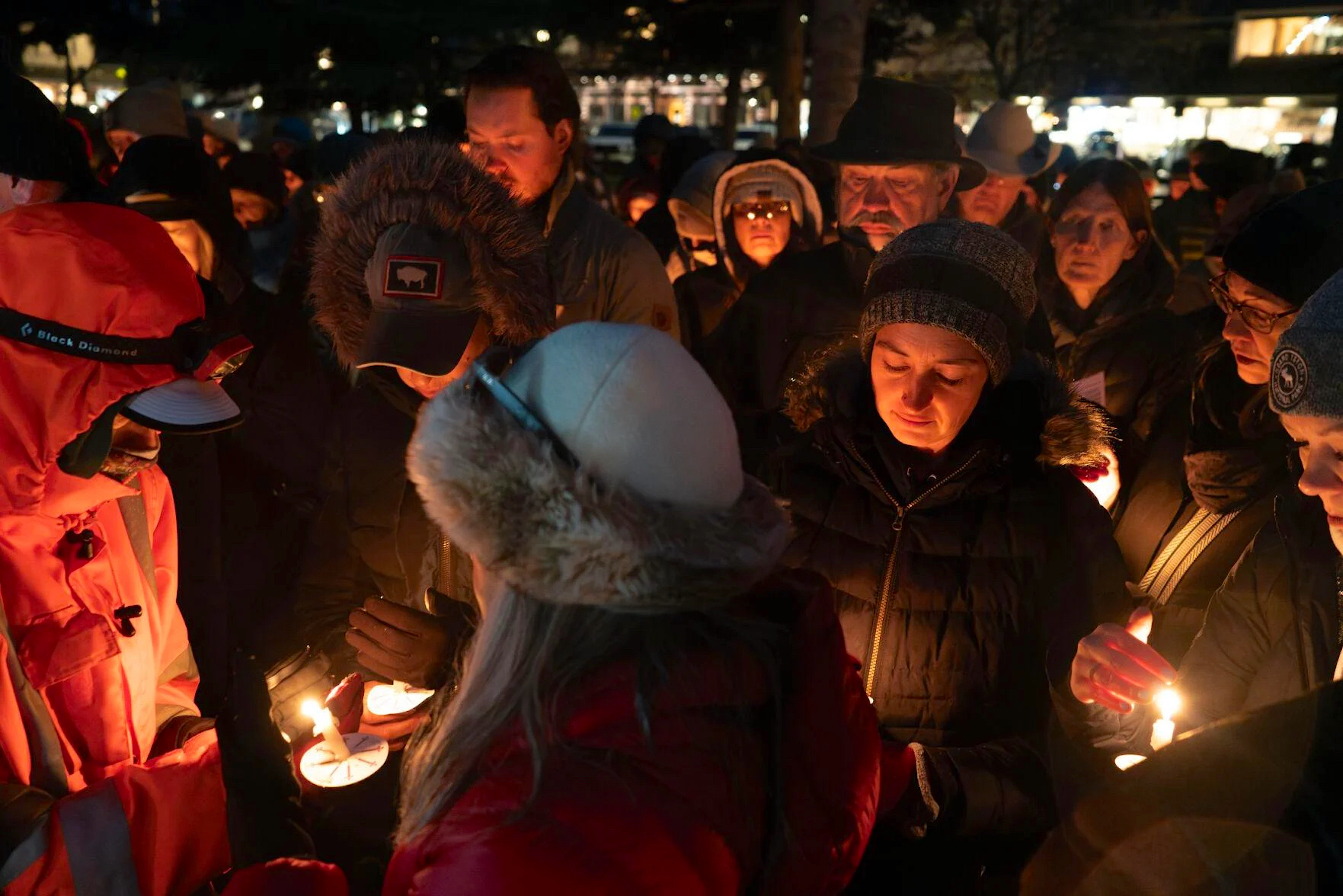For mourners, 399 was like a 'first love', More than 100 people braved rain, snow and cold to commemorate famed bear.

Mourners gathered on Town Square on Saturday evening for a candlelight vigil in remembrance of Grizzly 399, who was killed Oct. 22 in an automobile collision in the Snake River Canyon. Attendees listened to speakers share stories of the prolific mama bear and looked toward her legacy. Photo by Erin Burk, Jackson Hole News&Guide.
JACKSON — Rain and snow fell Saturday evening on Town Square as a group of soaked, candle-holding mourners listened to wildlife guide Bo Welden talk about one of his life’s most meaningful, one-way relationships.
“Seeing 399 is like falling in love for the first time,” he said. “Every time you got to see her, it was kind of like you forgot to breathe. You will just bail on your friends and your family to go spend time with that first love. And I argue people do that with 399 all the time.”
Welden spoke in the present tense Saturday, but 399 was in the past.
The famous grizzly, who raised at 18 cubs in Grand Teton National Park, died Oct. 22 after being hit by a car in the Snake River Canyon. 399 was the first female grizzly to take up residence in Grand Teton National Park after grizzlies were extirpated from the park and then protected under the Endangered Species Act in 1975.
Over the course of her 28 years, humans watched as she raised her cubs, taught them to hunt and forage, kicked them off and mated — all along the side of roads. People, including wildlife managers, developed intense connections to the bear, and her death spurred mourning around the globe.
Jacksonites hosted spiritual ceremonies to remember her, finished murals in her honor and erected a makeshift memorial on Town Square.
On Saturday, bear buffs continued mourning with the candlelit vigil where Welden spoke, joined by photographer Tom Mangelsen, his friends and fellow photographers, and more than 100 others who endured wind and rain to keep their candles lit during 3 minutes and 99 seconds of silence.
399 was an outstanding mother, loving, caring, playful and protective, Tiffany Taxis said, describing the bear as tolerant and patient with her own species and the throngs of humans who crowded roadsides to watch her. But Taxis also described 399 as an “explorer.”
“She was the Amelia Earhart of our bears,” she said. “She traveled up and down, north, south, east, west, much to our concern.”
In 2021, when 399 had four cubs, she left Grand Teton’s southern border, waltzing through downtown Jackson Hole and as far south as Hoback, where two of her four cubs were collared.
The trek, as well as one Solitude Subdivision resident’s decision to feed her, caused the concern Taxis referenced.
Bears that access human-related foods can get aggressive when they try to reach them again and are often killed by wildlife managers to keep humans safe. 399 was spared that fate, but her southern sojourn pushed town and county officials to pass new rules requiring bear-resistant trash cans and to ban wildlife feeding.
“She’s not just a bear,” said Hsiang-hua Wang, 38, who traveled to Jackson from Idaho Falls for the memorial. “She’s almost like a symbol of the future and hope. Now people are paying attention.”
Welden described the crowd’s relationship with 399 as one that the community knew was as impermanent as any first love. Bears are shorter-lived than humans, and 399 was old for her age — old enough and fecund enough to be dubbed the oldest known grizzly mother in the Greater Yellowstone Ecosystem.
That was part of the reason for the magic of humans’ relationship with the bear, he said.
“We felt like we were on borrowed time with 399 as she continued to break records in age and cubs,” he said.
Now that she’s gone, Welden said, her legacy remains.
“399 helped so, so many people understand what it means to fall in love with this place,” he said, “what it means to fall in love with this community right here, and what it means to fall in love with one marvelous bear.”
This story was published on November 6, 2024.





